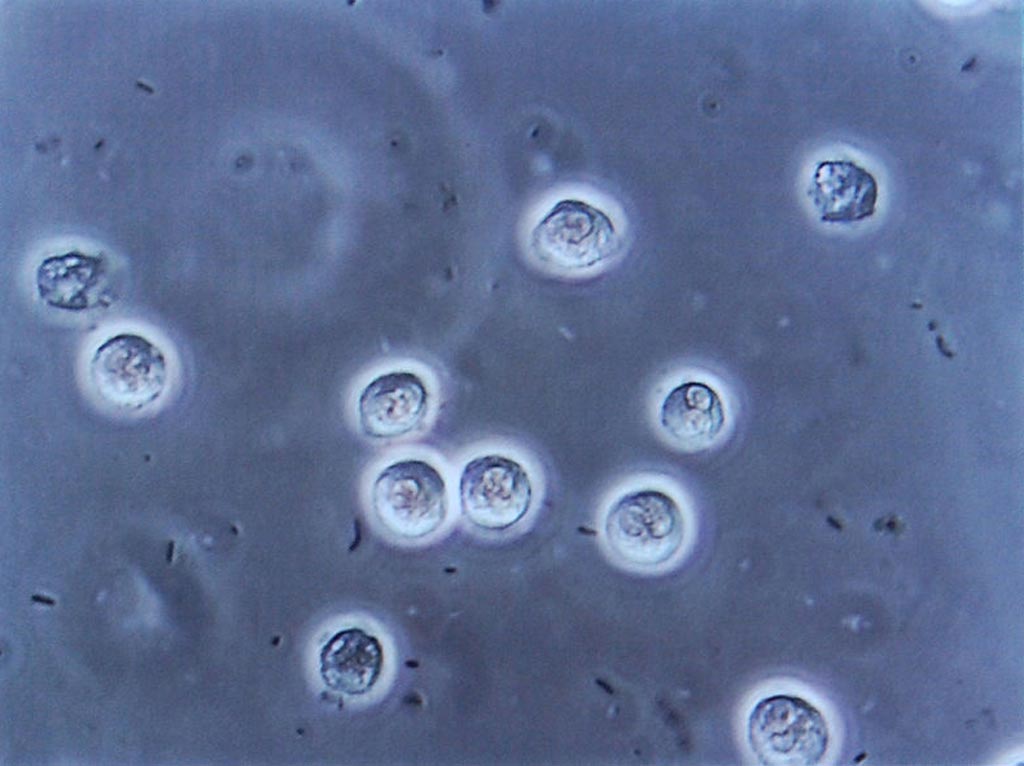UTIs Diagnosed with Genetic Analysis of Cell-Free DNA
By LabMedica International staff writers
Posted on 04 Jul 2018
Genetic analysis of cell-free DNA (cfDNA) in urine samples reveals valuable information, which enables comprehensive monitoring of host and pathogen dynamics in bacterial and viral urinary tract infections.Posted on 04 Jul 2018
Investigators at Cornell University (Ithaca, NY, USA) isolated cfDNA from 141 urine samples from a cohort of 82 kidney transplant recipients and performed next-generation sequencing.

Image: Multiple bacilli (rod-shaped bacteria, here shown as black and bean-shaped) shown between white blood cells in urinary microscopy. These changes are indicative of a urinary tract infection (Photo courtesy of Wikimedia Commons).
The analysis revealed that urinary cfDNA was highly informative about bacterial and viral composition of the microbiome, antimicrobial susceptibility, bacterial growth dynamics, kidney allograft injury, and host response to infection. These different layers of information were accessible from a single assay and individually agreed with corresponding clinical tests based on quantitative PCR, conventional bacterial culture, and urinalysis. Furthermore, cfDNA revealed the frequent occurrence of diseases that remained undiagnosed with conventional diagnostic protocols.
“We found that we could deduce the fraction of the bacterial population that is growing, by carefully looking at the places in the genome where the cell-free DNA was derived from” said senior author Dr. Iwijn De Vlaminck, professor of biomedical engineering at Cornell University. "Metagenomic analysis of the cell-free DNA can also be used to infer which antimicrobial drugs may work best against a particular infection."
The paper describing genetic analysis of cell-free DNA in urine specimens was published in the June 20, 2018, online edition of the journal Nature Communications.
Related Links:
Cornell University














